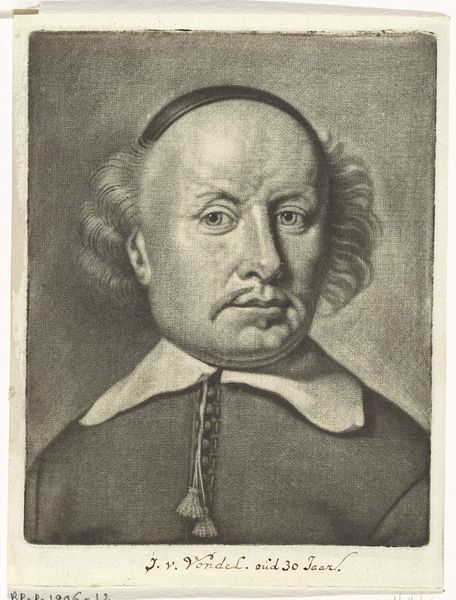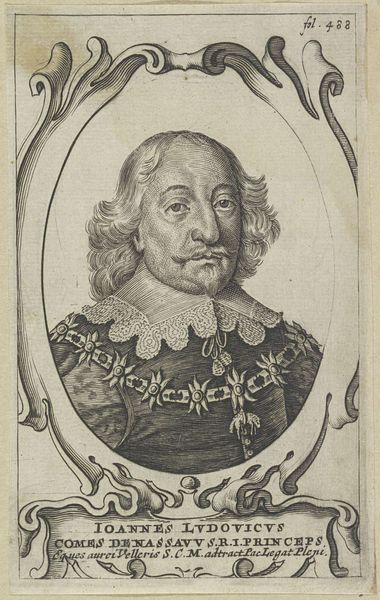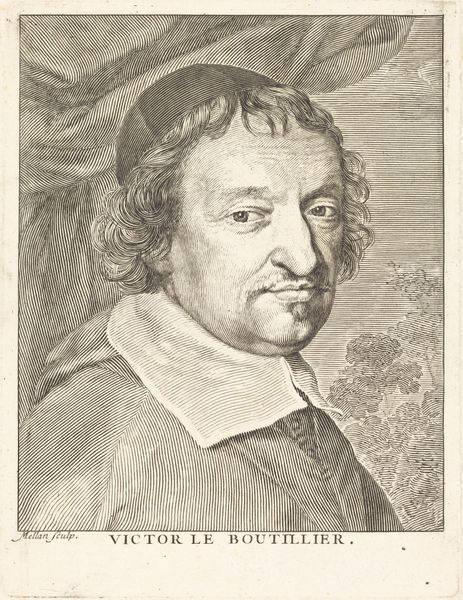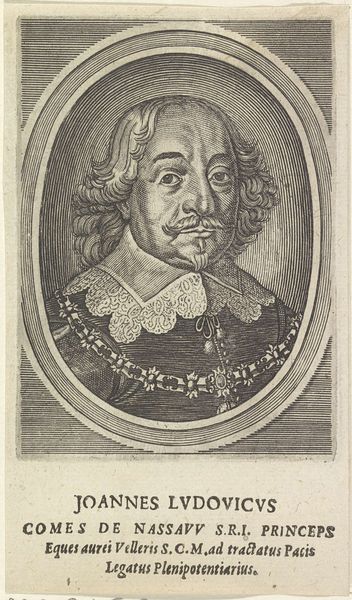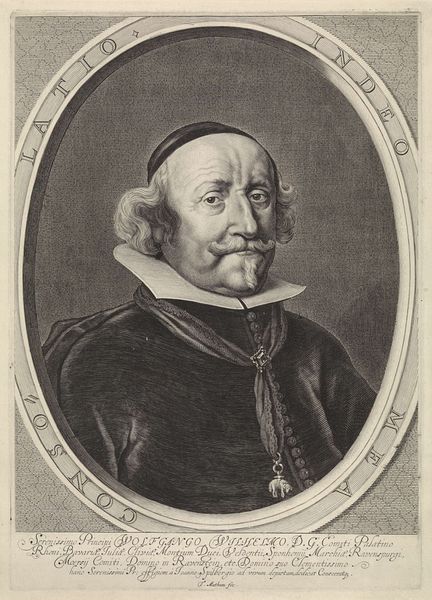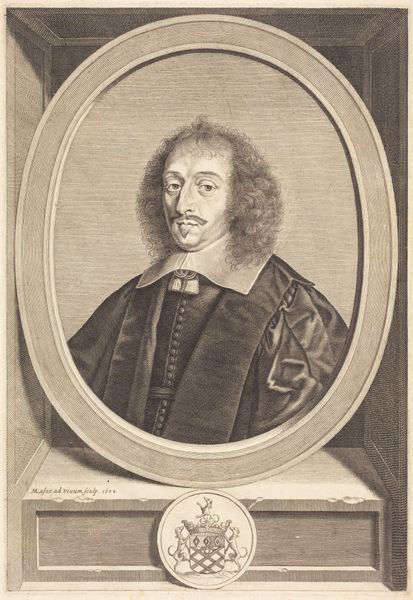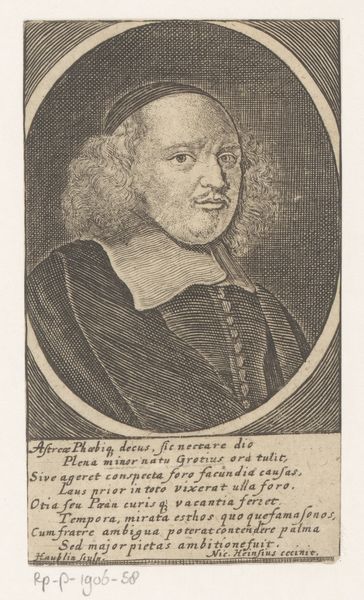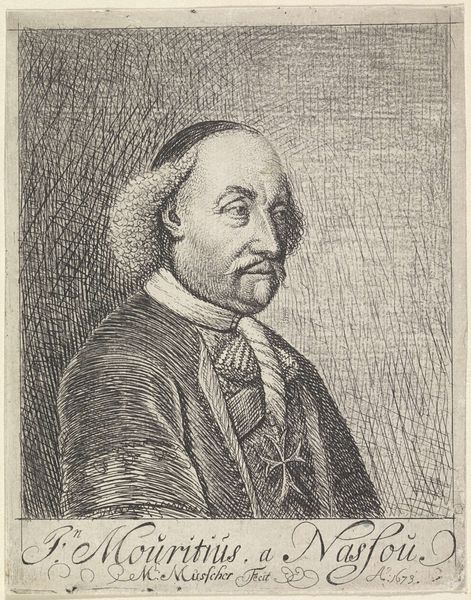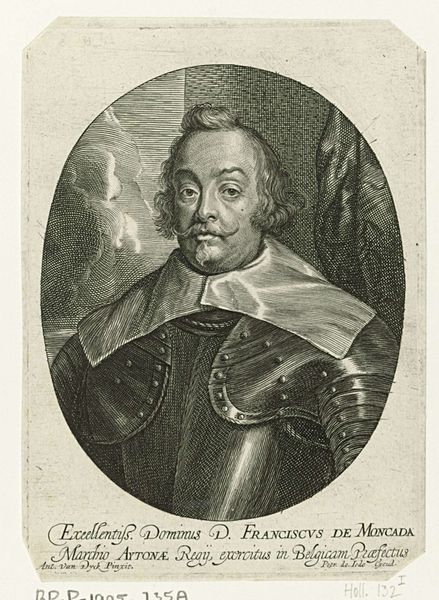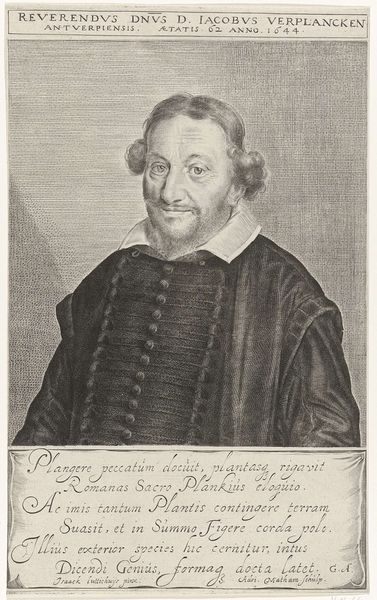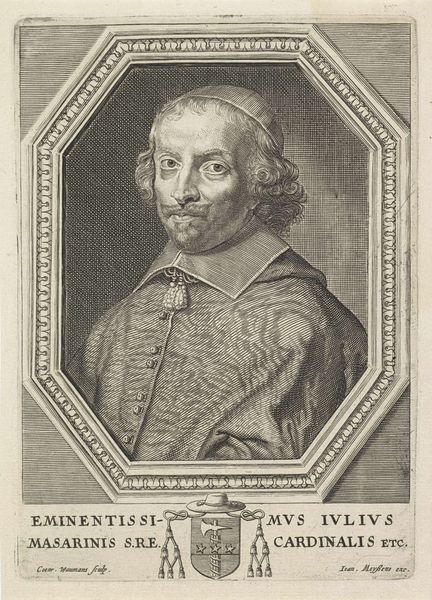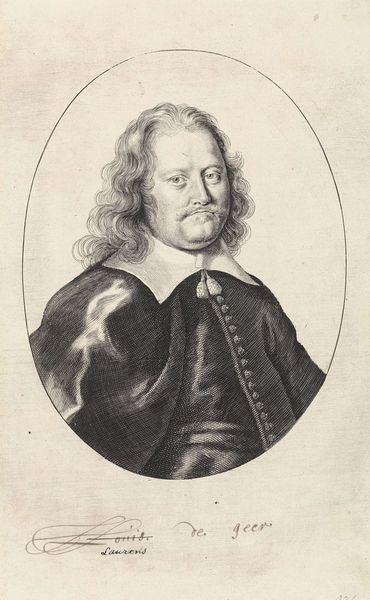
engraving
#
portrait
#
baroque
#
dutch-golden-age
#
history-painting
#
engraving
#
portrait art
Dimensions: height 175 mm, width 129 mm
Copyright: Rijks Museum: Open Domain
Editor: Here we have a portrait of Johan Maurits, Count of Nassau-Siegen, dating somewhere between 1625 and 1699. It's an engraving, currently housed in the Rijksmuseum. What strikes me most is the intricate detail achieved solely through line work. How do you approach interpreting such a visually austere, yet complex, piece? Curator: The essence resides precisely within that austere complexity. Consider the deliberate modulation of line density; observe how it sculpts form, creates chiaroscuro. The very *syntax* of the engraving—the varying weight and direction of each line—serves to define the subject’s presence, imbuing the composition with dynamism despite the static nature of portraiture. Editor: So, it's the formal elements alone that construct the meaning? No need to delve into the history behind the figure or the social context? Curator: The historical background remains ancillary to the inherent aesthetic value. Notice how the engraver meticulously renders texture – the luxurious curls of the wig, the smooth planes of the face, the detailing of the clothing. These are not mere representational techniques, but fundamental components establishing a structured visual language. Semiotics here come from internal pictorial dynamics, more than symbolic meaning. Editor: That’s a very… focused reading. It gives me a whole new perspective on appreciating the artistry, stripping it down to the bare bones of technique and visual construction. Curator: Precisely. And hopefully it allows a clearer perception of beauty as well as mastery over such a restrained method of image production. The pure aesthetic!
Comments
No comments
Be the first to comment and join the conversation on the ultimate creative platform.
